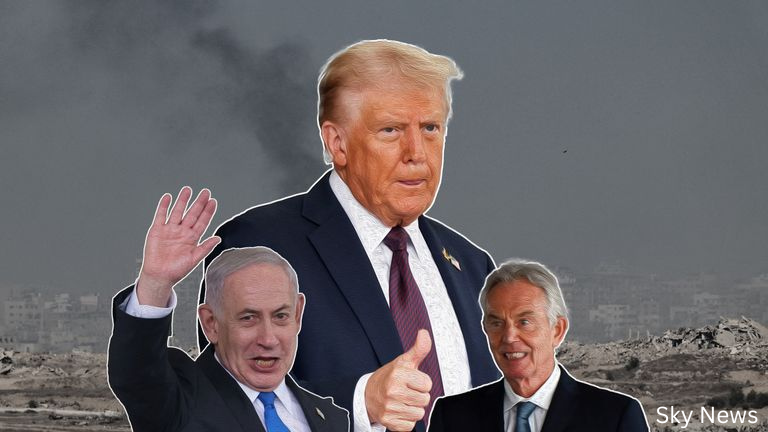Tensions in the Middle East escalated on September 9 when Israeli jets launched a missile strike over the Red Sea targeting a residential neighborhood in Doha, Qatar, where Hamas representatives were reportedly discussing a plan to end the war in Gaza. The attack failed to hit its intended targets but marked a dramatic provocation that threatened to derail cease-fire negotiations. In the aftermath, a high-stakes diplomatic effort led by former President Donald Trump and supported by Prime Minister Benjamin Netanyahu sought to bring the conflicting parties together, raising cautious optimism for a resolution to the nearly two-year-long conflict.
The Controversial Strike in Doha
The missile strike over Doha represented a particularly bold and provocative move by Israel. By targeting negotiators engaged in discussions for peace, the attack alarmed officials both in the Middle East and Washington, highlighting the fragility of the peace process. Analysts described the strike as “negotiation by bombing,” emphasizing the counterproductive nature of the action.
Despite the attack, the high-level diplomacy that followed underscored the willingness of both American and Israeli leaders to pursue a framework for ending hostilities. Trump and Netanyahu’s subsequent public appearances at the White House signaled a renewed commitment to achieving tangible results, though their statements reflected differing tones. Trump hailed the effort as “a big, big day, a beautiful day, potentially one of the great days ever in civilization,” while Netanyahu offered a more measured assessment, emphasizing that the plan “achieves our war aims.”
Diplomatic Pressure and Negotiation Dynamics
The failed strike ultimately galvanized President Trump and his advisers to intensify pressure on Netanyahu to support the peace framework. Months of relative passivity by the U.S. administration allowed Israel to continue military operations against Hamas, which resulted in rising civilian casualties and growing international scrutiny.
Following the strike, Trump’s team, including Jared Kushner in a revived Middle East negotiation role, pursued intense diplomatic engagement. The objective was to leverage Israel’s willingness to negotiate and Hamas’ openness to dialogue in order to secure a cease-fire, humanitarian relief, and the release of hostages.
Hamas’ Conditional Acceptance
On the evening following these efforts, Hamas indicated its readiness to release all Israeli hostages and the bodies of deceased captives, responding to Trump’s proposed peace plan. However, the group’s statement did not commit to all elements of the American proposal, notably the requirement to relinquish arms—a central demand of Israel.
While Hamas’ acceptance was a significant step forward, it left key questions unresolved. The statement opened the door for negotiations via mediators but maintained Hamas’ strategic flexibility in shaping future governance and security arrangements within Gaza.
Challenges to Implementation
Even with tentative agreements in place, substantial challenges remain. Netanyahu’s coalition includes hardline members who may resist concessions, and Arab and Muslim nations supporting the plan have shown signs of wavering, potentially affecting regional consensus. Additionally, Hamas’ partial acceptance and conditional commitments highlight the difficulty of translating statements into actionable measures, particularly concerning arms control, governance, and humanitarian operations.
Trump acknowledged these uncertainties in a celebratory Oval Office video, stating: “This is a big day. We’ll see how it all turns out. We have to get the final word down in concrete.” His remarks underline the recognition that careful diplomacy and verification are essential for any sustainable outcome.
High-Stakes Diplomacy and Regional Implications
The process leading up to Hamas’ announcement involved intense diplomacy among multiple nations that historically lacked trust in each other’s motives. Over 20 days following the Doha strike, back-channel discussions facilitated coordination between the United States, Israel, and Arab countries, producing tentative agreement on a path toward ending the war.
Key features of this diplomatic effort include:
- Unifying Arab and Muslim Nations: Bringing together nations with diverging interests to support a single framework.
- Engagement with Israel: Ensuring Israel’s participation in the plan while balancing domestic political constraints.
- Humanitarian Considerations: Addressing the release of hostages and provision of aid to affected populations.
Observers note that even if the peace deal faces obstacles in implementation, the act of uniting these parties represents a notable achievement in regional diplomacy.
Historical Context and Potential Legacy
The diplomatic effort recalls successes from Trump’s first administration, particularly the Abraham Accords, which normalized relations between Israel and several Arab nations. By leveraging personal relationships, international influence, and strategic pressure, Trump and his team sought to replicate that approach in resolving hostilities in Gaza.
Analysts emphasize that the process may leave a lasting effect, both in demonstrating the potential for multilateral cooperation and in providing a framework for addressing future conflicts. However, the complexity of regional politics, unresolved security issues, and divergent agendas means that the outcome remains uncertain.
Conclusion
The missile strike in Doha, the subsequent diplomatic push by Trump, and Hamas’ tentative acceptance of the peace plan illustrate the fragile and high-stakes nature of Middle East negotiations. While the path to lasting peace remains challenging, the effort has united diverse stakeholders around a common goal and created cautious optimism that two years of devastating conflict might be mitigated through careful diplomacy. The coming weeks and months will determine whether these diplomatic efforts can translate into tangible, long-term stability for Gaza and the region.




